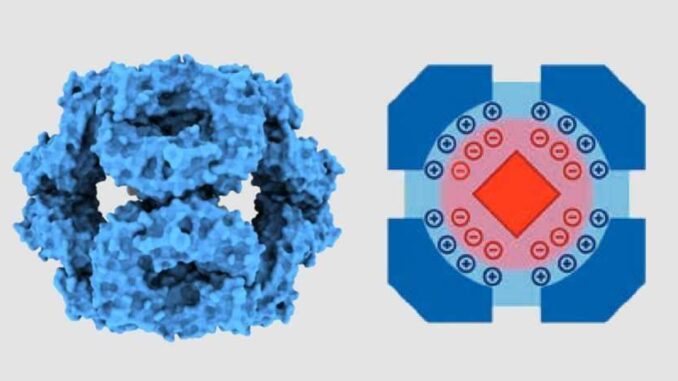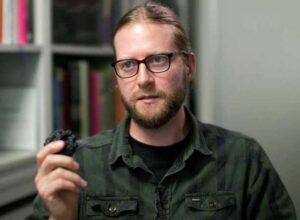
Visits: 0
– It’s not always easy to get molecules of an active substance to where they need to be in the body and into cells, keeping them intact. This is because some of these molecules decay quickly and many of them – including RNA molecules – are not readily taken up by cells. If they are used as active substances, they need an administration system.
Courtesy ETH by Fabio Bergamin: In COVID mRNA-based vaccines, for example, the RNA is packaged into a lipid nanoparticle. A disadvantage of this is that lipid nanoparticles are not stable for a long time at room temperature. In recent years, Tom Edwardson, a senior scientist in the Department of Chemistry and Applied Biosciences at ETH Zurich, has developed a unique protective shell in which RNA molecules can be easily packaged and protected. It’s a nanoscale protein Cage made up of 24 identical proteins.
Because of its small size, this cage cannot absorb an entire mRNA molecule like the lipid nanoparticles used in current COVID vaccines. Instead, Edwardson’s protein cage accommodates smaller RNA molecules – known as small interfering RNA – that allow systematic inhibition of individual genes in cells.
Easy to carry
Protein cages, which are very easy to produce in bacteria using biotechnology. “Groups of 24 individual proteins organize themselves into cubes. It was mind-blowing the first time I saw him,” says Edwardson. And while other layers of protective molecules, like lipid nanoparticles, turn out to be different sizes when they’re made, protein cages are exactly the same shape and size. “This is ideal, as size influences the properties of medicines – for example, whether the cells absorb them and how they do it,” explains the chemist.

Another advantage of protein cages over other options for protecting small molecules of active substance is that they can easily be stored at room temperature for months – with no need for refrigeration. Finally, cube-shaped cages have a small opening on all sides, facilitating the loading of molecular “goods” for transport: protein cages can be manufactured in large quantities and later filled with the desired load. “They can even be filled with patient-specific RNA drugs,” Edwardson points out.
For chemotherapy too
To develop the protein’s envelopes, Edwardson used an existing synthetic protein structure that other scientists had developed and changed the sequence of protein components at several key positions. The goal was to end up with several positively charged atoms inside the cage. RNA molecules are negatively charged, which means they are automatically pulled through the openings of the protein cage by electrical attraction. “Our cages are a typical example of protein engineering. Today we are able to specifically modify proteins to create new molecular objects,” says Edwardson.
Since then, he has further improved the protein cage by coating the interior with a layer of surfactant. This allows water-insoluble molecules, such as anti-cancer therapies, to also be transported inland. In the future, he hopes to modify the exterior of the cages in specific ways, making it possible to control which somatic cells the protein cages enter. ETH Zurich has filed two patents on Edwardson’s protein cages.
He and his colleagues are now planning to create a spin-off to further develop the cages and prepare them for the market. “The environment in Switzerland is ideal for starting a company,” he says. He would like to stay here anyway – also to be close to the good climbing opportunities in the mountains.
In addition, he teaches his younger colleagues in the research group how important it is to do something other than work. And that people should travel while they’re young, and that there’s no harm in taking a break between a degree program and a doctoral program to work. “I don’t regret working as a teacher, as I learned a lot there that still benefits me today.”
Related article: Trojan Horse to Kill Cancer Cells
Coronavirus mRNA vaccine (mRNA-1273) in phase 1 test / study
Leave a Reply